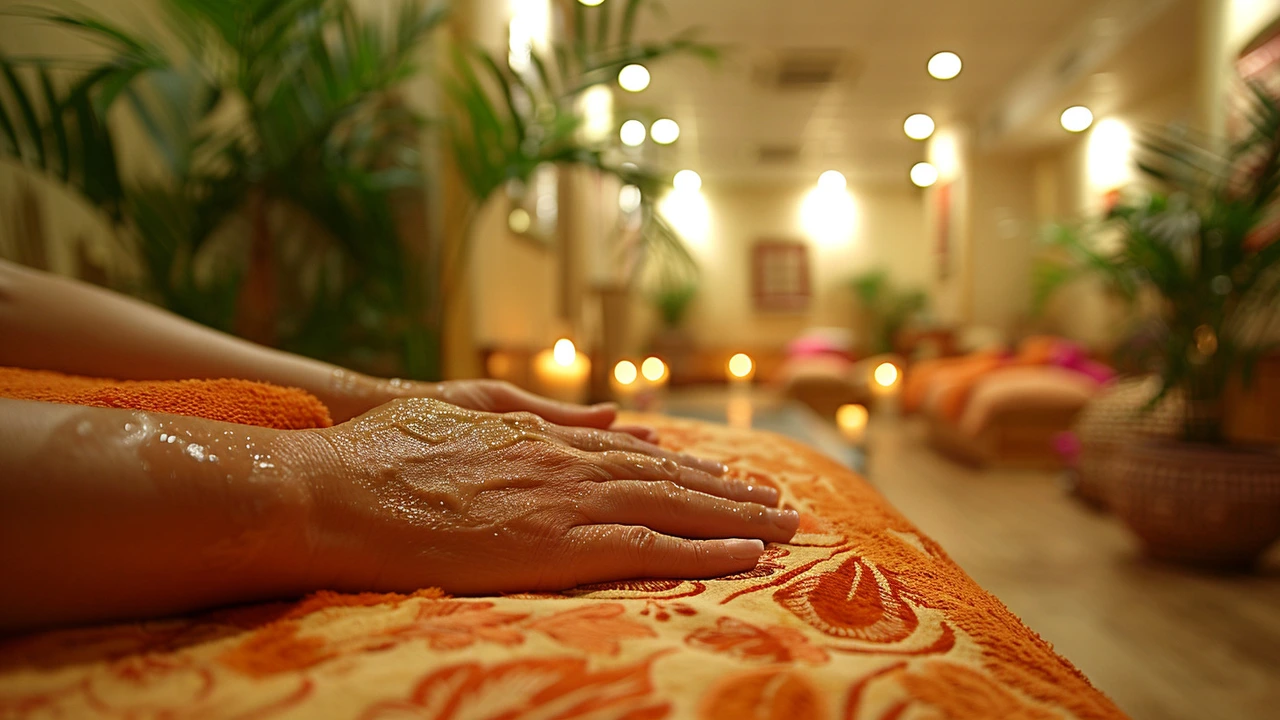-
27

Unlock the Restorative Benefits of Abhyanga: A Comprehensive Guide to Oil Massage
The Healing Mechanisms and Benefits of Abhyanga
Abhyanga, the Ayurvedic oil massage, is a profound practice that rejuvenates the body and calms the mind. Originating from India, this therapeutic method is deeply rooted in the world's oldest holistic healing systems. Ayurveda views the body as interconnected with the mind and spirit, and abhyanga is designed to harmonize these elements. It involves the generous application of warm herbal oils, tailored to one's constitution or 'dosha', massaged thoroughly into the skin. This process not only nurtures the skin but also stimulates the internal organs, enhances blood circulation, and promotes the elimination of impurities from the body.
The oils used in abhyanga, such as sesame, coconut, and mustard, are rich in nutrients and possess anti-inflammatory properties. When massaged into the skin, they penetrate deeply to nourish and detoxify. The specific techniques employed in abhyanga also target the 'marma points'—vital points of the body similar to acupuncture points in Chinese medicine. Stimulating these points can release physical and emotional blockages, facilitating a flow of energy that promotes health and healing. Among the myriad benefits reported, regular practice of abhyanga can lead to improved sleep, enhanced skin elasticity, better flexibility, reduced stress levels, and a fortified immune system.
One noteworthy aspect of abhyanga is its adaptability to different individual needs. For instance, sesame oil is celebrated for its ability to balance the Vata dosha, making it ideal for people with dry skin or those who experience nervousness and anxiety. Coconut oil, cooling in nature, is suitable for individuals with the Pitta dosha who may suffer from inflammation and heat in the body. As such, selecting the right oil is a critical step in maximizing the therapeutic effects of abhyanga.
Practical Tips for Incorporating Abhyanga into Your Routine
Integrating abhyanga into your daily life isn't just beneficial; it's a luxurious way to reconnect with your body and enhance your self-care regimen. The best time for abhyanga is in the morning, which helps to stimulate the body and prepare it for the day ahead. However, for those who find their schedules too demanding in the mornings, performing abhyanga in the evening can also be effective, particularly as a prelude to a peaceful and restorative sleep.
Here's how you can begin: Start by choosing an oil suitable for your dosha. Warm the oil to a comfortably warm temperature, not hot, and begin by applying it to the crown of your head. Gently massage in a circular motion, slowly working down to the neck, shoulders, arms, and finally, the feet. Paying special attention to the joints, such as elbows and knees, can increase suppleness and reduce stiffness in these areas.
Self-massage should be done with mindfulness and care, creating a meditative experience that not only benefits the body but soothes the mind. The strokes used during abhyanga should be both steady and gentle, creating warmth through friction which helps the oil penetrate deeper into the tissues. Spend about 15 to 20 minutes on this massage routine to ensure that the oil is thoroughly worked into the body, and then, if possible, relax for a short period to let the body absorb the full benefits before taking a warm shower.
With regular practice, abhyanga can become a healing ritual that enhances your overall health and well-being. It's not merely a massage; it's a form of self-love that nurtures both the body and the spirit. As you adapt this practice to your lifestyle, observe the changes it brings not only physically but also in your emotional and psychological health. You might find a newfound balance and vitality that can transform your approach to health care.
 Health & Wellness
Health & Wellness
Write a comment